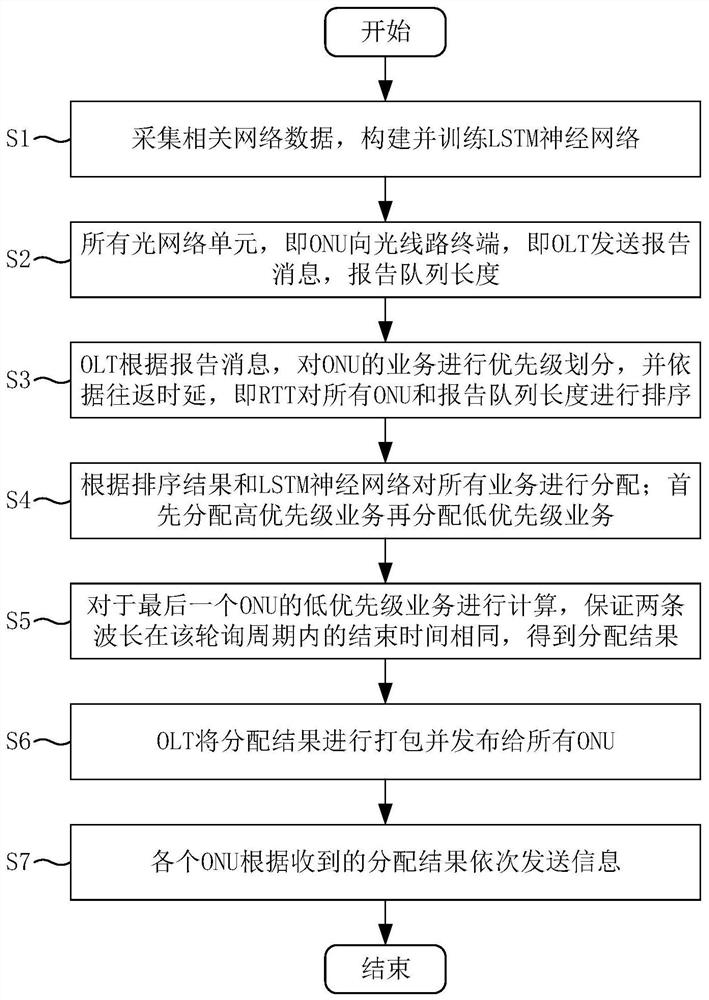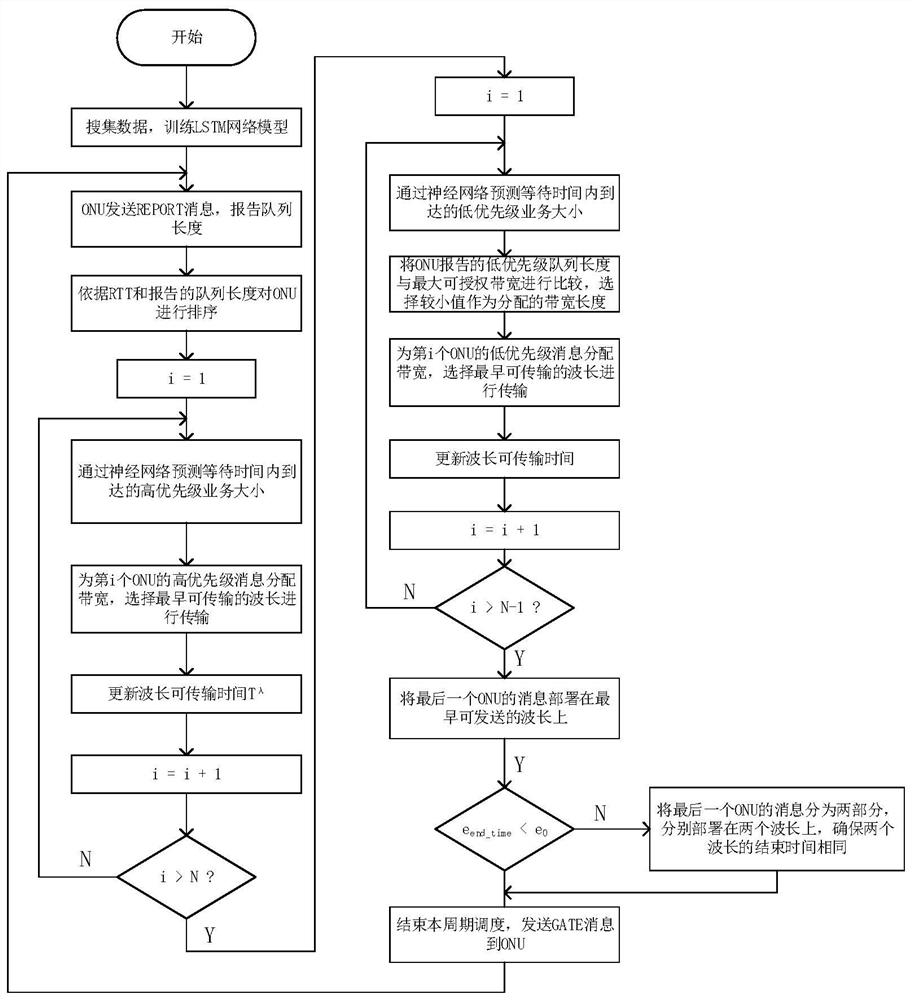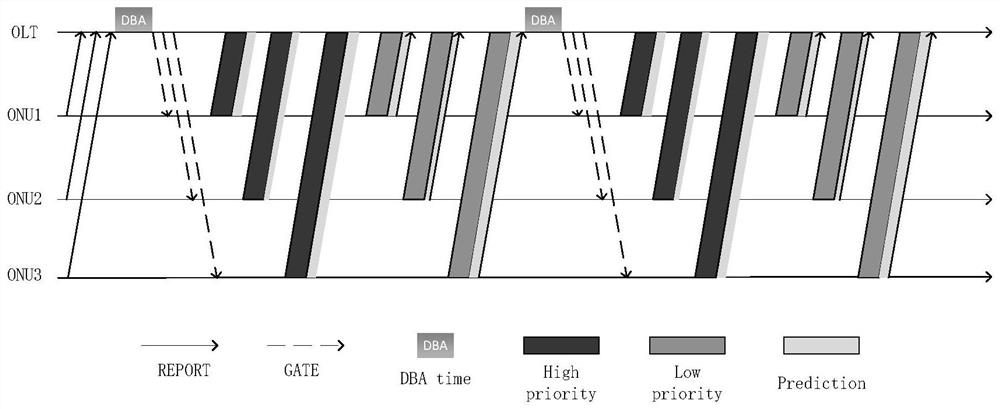Uplink Bandwidth Allocation Method Based on Neural Network Prediction in 50g-pon Network
A 50G-PON, 1.50G-PON technology, applied in the selection device, electrical components, transmission system and other directions of the multiplexing system, can solve the problems of poor model effect, delay, shorten the delay of ONU sending data, etc., to ensure The effect of network service quality and transmission delay reduction
- Summary
- Abstract
- Description
- Claims
- Application Information
AI Technical Summary
Problems solved by technology
Method used
Image
Examples
Embodiment 1
[0049] like figure 1As shown, the uplink bandwidth allocation method based on neural network prediction in the 50G-PON network includes the following steps:
[0050] S1: Collect relevant network data, build and train the LSTM neural network;
[0051] S2: All optical network units, that is, ONU, send a report message to the optical line terminal, that is, OLT, to report the queue length;
[0052] S3: OLT prioritizes ONU services according to report messages, and sorts all ONUs and report queue lengths according to round-trip delay, that is, RTT;
[0053] S4: Allocate all services according to the sorting results and the LSTM neural network; firstly allocate high-priority services without limiting their bandwidth to ensure timely forwarding of all data; then allocate low-priority services, and limit the authorized bandwidth to prevent round-tripping The query cycle is too long;
[0054] S5: Calculate the low-priority service of the last ONU to ensure that the two wavelengths ...
Embodiment 2
[0080] More specifically, on the basis of Embodiment 1, for the description of the 50G-PON network in the new IEEE 802.3ca standard, most of the previous DBA algorithms are not well suited for this network, such as figure 2 As shown in the flowchart, the embodiment of this solution provides an uplink bandwidth allocation method based on neural network prediction, and also supports network service classification and provides network quality assurance.
[0081] In the specific implementation process, the services in the network can generally be divided into three categories: accelerated forwarding EF, guaranteed forwarding AF and best effort BE. The EF service requires stable bandwidth and low latency, the AF service requires stable bandwidth and does not require high latency, and the BE service does not require high bandwidth and latency. In this method, EF services are divided into high-priority services, and AF and BE services are divided into low-priority services.
[0082...
PUM
 Login to View More
Login to View More Abstract
Description
Claims
Application Information
 Login to View More
Login to View More - R&D
- Intellectual Property
- Life Sciences
- Materials
- Tech Scout
- Unparalleled Data Quality
- Higher Quality Content
- 60% Fewer Hallucinations
Browse by: Latest US Patents, China's latest patents, Technical Efficacy Thesaurus, Application Domain, Technology Topic, Popular Technical Reports.
© 2025 PatSnap. All rights reserved.Legal|Privacy policy|Modern Slavery Act Transparency Statement|Sitemap|About US| Contact US: help@patsnap.com



